North Star Design Model 192 CD Transport and USB DAC 32
|
32 Bits and Still Counting…. |
|
|
|
December, 2011 |
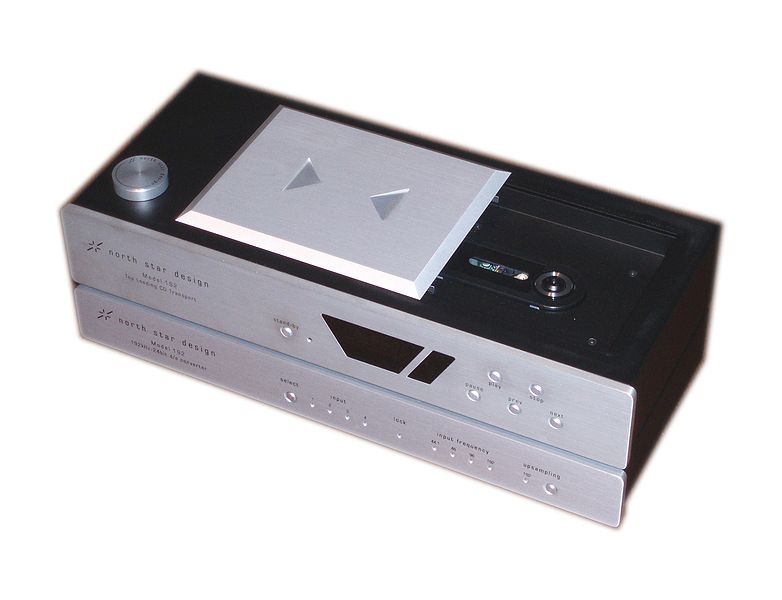
I have mentioned before how abundant and omnipresent computer-based audio had become at this year’s Rocky Mountain Audio Fest. The wide acceptance of the Apple iPod (and its siblings, the iTouch and iPad) has inspired a massive growth in software and ancillary equipment with which to connect to your high-end stereo. It’s become commonplace to see audiophile components equipped with Universal Serial Bus (USB) inputs. Whether streaming audio from a remote radio station or casually downloading a favorite song from your CD library or iTunes, your choices continue to increase, along with ease of access and quality. As more manufacturers scurry to include USB inputs into their wares, it was Italian-based North Star Design’s USB DAC 32 that caught my attention.
This isn’t the first review of a North Star digital combo. Our own Bill Wells lavished high praise on their Model 192 transport/DAC back in the summer of 2007 (here). In fact, Bill’s praise warranted a Most Wanted Component Award. Four years later, to keep up with the computer audio craze, North Star has introduced a newer version with their model USB DAC 32. Based on Bill’s enthusiasm for the earlier duo, I thought auditioning the North Star Model 192 Mk II transport with the new USB DAC 32 might offer some new insights into this rather unassuming company. Anthony Perrotta (Perrotta Consulting) provided the equipment for this review.
Upon their arrival weeks later, I was somewhat taken aback to discover the 192 transport and DAC32 measure only 7″ front to back. These are the shortest components I’ve had on my equipment rack! Sleek and elegant as one would expect of Italian design, this combo is no lightweight despite its small footprint.
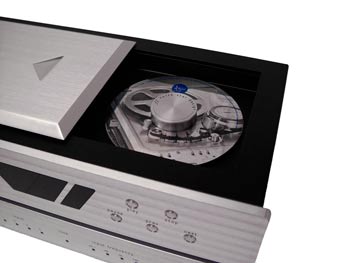
The 192 transport uses Philips’ latest CD-Pro2 drive. It’s a top loader with a sliding drawer that opens manually from right to left, revealing its CD puck and tray. The front of the unit might be described as understated, containing the usual controls for Stop, Play, Forward, etc. But the rear has something quite out of the ordinary: in addition to the usual S/PDIF RCA and XLR digital outputs, the 192 takes advantage of the CD-Pro2’s available I2S output via a standard RJ45 connector. I2S was made popular in the ’90s by Audio Alchemy’s and Perpetual Technology’s chief designer, Peter Madnick (who still employs I2S in his newest flagship “Constellation Audio” series of electronics). I2S provides separate, non-multiplexed data and clock signals and is purported to reduce jitter by an order of magnitude.
Regarding chip sets, the owner’s manual states, “The anti-jitter and upsampling section is based on a Crystal CS8420 and Nippon Precision Circuits SM5849AF upsampler. The CS 8420 upsamples the 44.1kHz 16-bit to 96KHz 24-bit and the SM5849AF upsamples until 192kHz 24-bit.” Unfortunately, the Model 192 Mk II only plays standard Redbook CDs but will also play your favorite compilations recorded on CD-R or CD-RW.
The DAC 32’s front panel is sleek, slim and hosts a Standby and Input button (2). The front panel’s LED displays the frequency of each incoming signal (44.1 kHz, 48 kHz, 88.2 kHz, 96 kHz, 176.4 kHz and 192 kHz). No matter what the sample rate or bit depth of the input, the DAC 32 upsamples to 192kHz/32bits. The rear panel, in addition to supporting digital inputs, has both RCA and XLR analogue outputs. A power toggle switch is located right above the IEC connector, which is adjacent to a 630mA Slow-Blow fuse. Lastly, a NO UPSAMPLE switch is available to those who choose to listen to native Redbook sample rate and bit depth, without any digital wizardry.
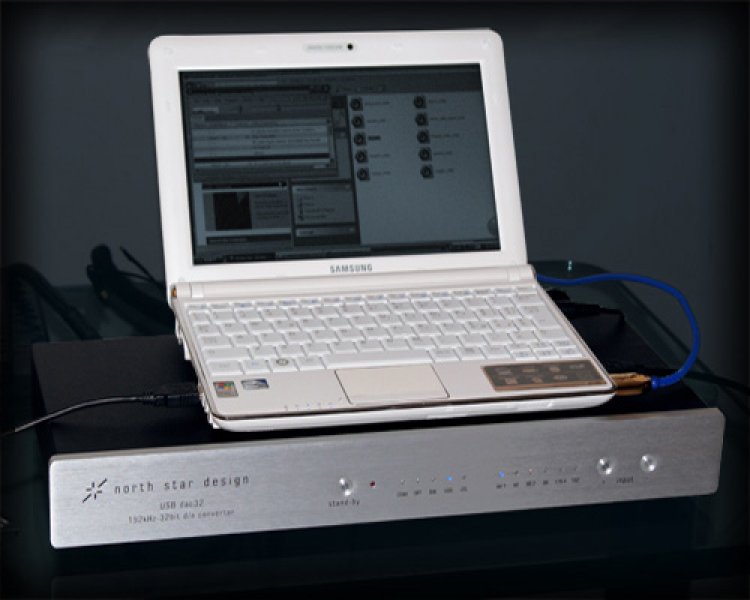
Whether its streaming music off Pandora, Foobar, Amarra, iTunes or downloading CDs from your computer’s hard-drive, the DAC 32 is designed to be willing and capable. The owner’s manual goes on to state, “The digital section is completed by a pair of converters in balanced mono configuration that can handle digital streams up to 192kHz-32bit. These important resources in the digital section are complemented by a refined and silent analog section with intrinsically balanced output. The excellence of the DAC is confirmed by two separate power supplies; one dedicated to the digital section and one dedicated to the analog section.”
What makes the DAC 32 particularly appealing is that it is a feature-laden component that can make streaming audio from the Internet a delight due of its upsampling prowess. Besides, the fit and finish of both the Model 192 Mk II and DAC 32 are top-notch.
I put the Model 192/DAC 32 combo through the usual paces using a variety of gear that included both the sensational Tanagra Audio Lotus mini-monitors (recently reviewed) as well as the TIDAL Audio Cera floorstanders. Amplification included the Beyond Frontiers’ 200-watt Tulip and my long-time favorite Behold Gentile. Cables throughout were Bybee Designs, although digital was supplied mainly via the supplied RJ45 I2S cable.
The DAC 32 comes with software on a CD-ROM and a USB 2.0 cable, needed to connect my Toshiba Laptop. The 12-page owner’s manual is well-written. I connected my laptop to the DAC 32, inserted the CD-ROM, and my laptop performed an auto-search for new drivers, which it then installed automatically. A quick selection in the audio preferences of Vista allowed me to link directly to the DAC 32’s USB interface. I was playing music within ten minutes of installing the software.
I was also impressed by the vast amount of music available right from my laptop. The sound was indeed a cut above what I expected from previous experience with “Internet music.” Particularly, the level of delicacy, transparency, and detail. However, I did find the sound somewhat truncated and constricted as if it lacked bandwidth. I’ve never been a huge fan of lo-resolution sources like iTunes or Windows, so needless to say, WHAT A SONIC DIFFERENCE the moment I switched over to HD Tracks via Media Monkey.
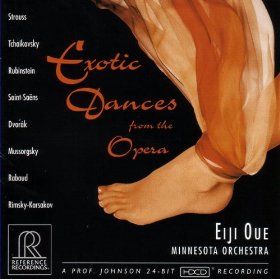
I suspect you already know how superior 96kHz/24-bit hi-res CDs are. Well, Rimsky-Korsakov’s “Snow Maiden” from Exotic Dances proved an absolute delight via this hi-res download. I got an immediate sense that the bandwidth had improved and that the low-end (through the TIDAL Ceras) was finally being put to the test. The top end had a sheen and a sense of air and space that was rather inviting and reminiscent of what I hear when listening through my big Sunny horns in my upstairs system. My downstairs system, if you’ll recall, is a more modest “real-world” system with virtually no tweaks. To clarify, a sense of air and dimensionality is always a plus when you’re tweak-less. No question, computer-based audio is here to stay. Having your entire music library right at your fingertips — with the click of a mouse — is addictive.
I particularly enjoyed the delicate spectral balance in a wide variety of music. Whether it was Renee Marie’s sweet and sensuous 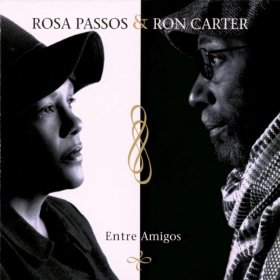 sound or Gregory Porter’s powerful and poetic baritone delivery, the Model 192/DAC 32 handled them in a way that had me second-guessing this combo’s asking price. Voices are always the most revealing measure of a product’s true merit (although a well-mic’d piano can be no less challenging). Want a great holiday treat? Mike Longo’s latest CD, To My Surprise, from the Mike Longo Trio Plus 2, is a barn-burner that features some of today’s great jazz musicians: Bob Crenshaw (bass), Lewis Nash (drums), Jimmy Owens (trumpet and flugelhorn), and Lance Bryant (tenor sax). Composed of mostly swinging, up-tempo and bluesy songs, I found myself particularly taken with the mellow and engagingly sweet song, Alone Again. On this long and expressive tune the musicians get a chance to really showcase
sound or Gregory Porter’s powerful and poetic baritone delivery, the Model 192/DAC 32 handled them in a way that had me second-guessing this combo’s asking price. Voices are always the most revealing measure of a product’s true merit (although a well-mic’d piano can be no less challenging). Want a great holiday treat? Mike Longo’s latest CD, To My Surprise, from the Mike Longo Trio Plus 2, is a barn-burner that features some of today’s great jazz musicians: Bob Crenshaw (bass), Lewis Nash (drums), Jimmy Owens (trumpet and flugelhorn), and Lance Bryant (tenor sax). Composed of mostly swinging, up-tempo and bluesy songs, I found myself particularly taken with the mellow and engagingly sweet song, Alone Again. On this long and expressive tune the musicians get a chance to really showcase 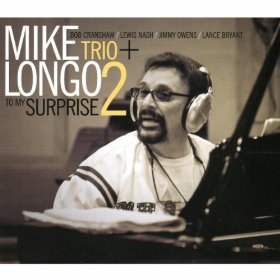 their talents through solo performances. Jimmy Owens and Lance Bryant, for example, form a symbiotic relationship that is unmistakably potent, yet sweet and melodic against Mike Longo’s punctilious piano performance.
their talents through solo performances. Jimmy Owens and Lance Bryant, for example, form a symbiotic relationship that is unmistakably potent, yet sweet and melodic against Mike Longo’s punctilious piano performance.
What resonated with me most, no matter the complexity and/or intensity of this 12-track CD, was the sense of breadth, ease and musical flow the Model 192/DAC 32 combo allows. At times, I felt this combo sounded far better than its $6,000 asking price (I can clearly remember when $6,000 for a digital front-end was top-tier, but not any more!). Seen in this light, the Model 192/DAC 32 harkens back to the good 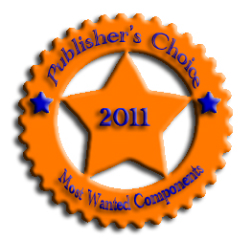 old days when spending six grand meant you were going to be happy for a very long time. I wouldn’t look any further than this dynamic duo for a reference system at this price!
old days when spending six grand meant you were going to be happy for a very long time. I wouldn’t look any further than this dynamic duo for a reference system at this price!
In the final analysis, I found the North Star Model 192 Mk II and DAC 32 combo to possess a sonic signature that I could easily live with. Its smaller-than-usual footprint gives a somewhat miniature look and feel, but it is a big-time player that is both versatile and musical. Having the rare I2S interface takes it to a level of musicality very seldom heard at this price. Highly recommended and my choice for Publisher’s Choice Most Wanted Component for 2011!

![]()
clement perry
Specifications:
Model 192 Transport: Price $2995.00
Model USB DAC 32: Price $2995.00
US Distributor:
Perrotta Consulting
211 Greenwood Ave 2-2 Suite 174
Bethel, CT 06801
phone/fax 1-877-289-2014
Web: http://www.perrottaconsulting.com
North Star Design s.r.l.
Via Lenin, 132
56017 San Giuliano Terme (PI)
ITALY
Phone/Fax +39-050-859166
e-mail: info@northstar.it
website: www.northstar.it
![]()
Don’t forget to bookmark us! (CTRL-SHFT-D)
Stereo Times Masthead
Publisher/Founder
Clement Perry
Editor
Dave Thomas
Senior Editors
Frank Alles, Mike Girardi, Russell Lichter, Terry London, Moreno Mitchell, Paul Szabady, Bill Wells, Mike Wright, and Stephen Yan,
Current Contributors
David Abramson, Tim Barrall, Dave Allison, Ron Cook, Lewis Dardick, John Hoffman, Dan Secula, Don Shaulis, Greg Simmons, Eric Teh, Greg Voth, Richard Willie, Ed Van Winkle, Rob Dockery, Richard Doron, and Daveed Turek
Site Management Clement Perry
Ad Designer: Martin Perry






Be the first to comment on: North Star Design Model 192 CD Transport and USB DAC 32